PlayStation VR review: "The leading VR headset in the ways that matter most"
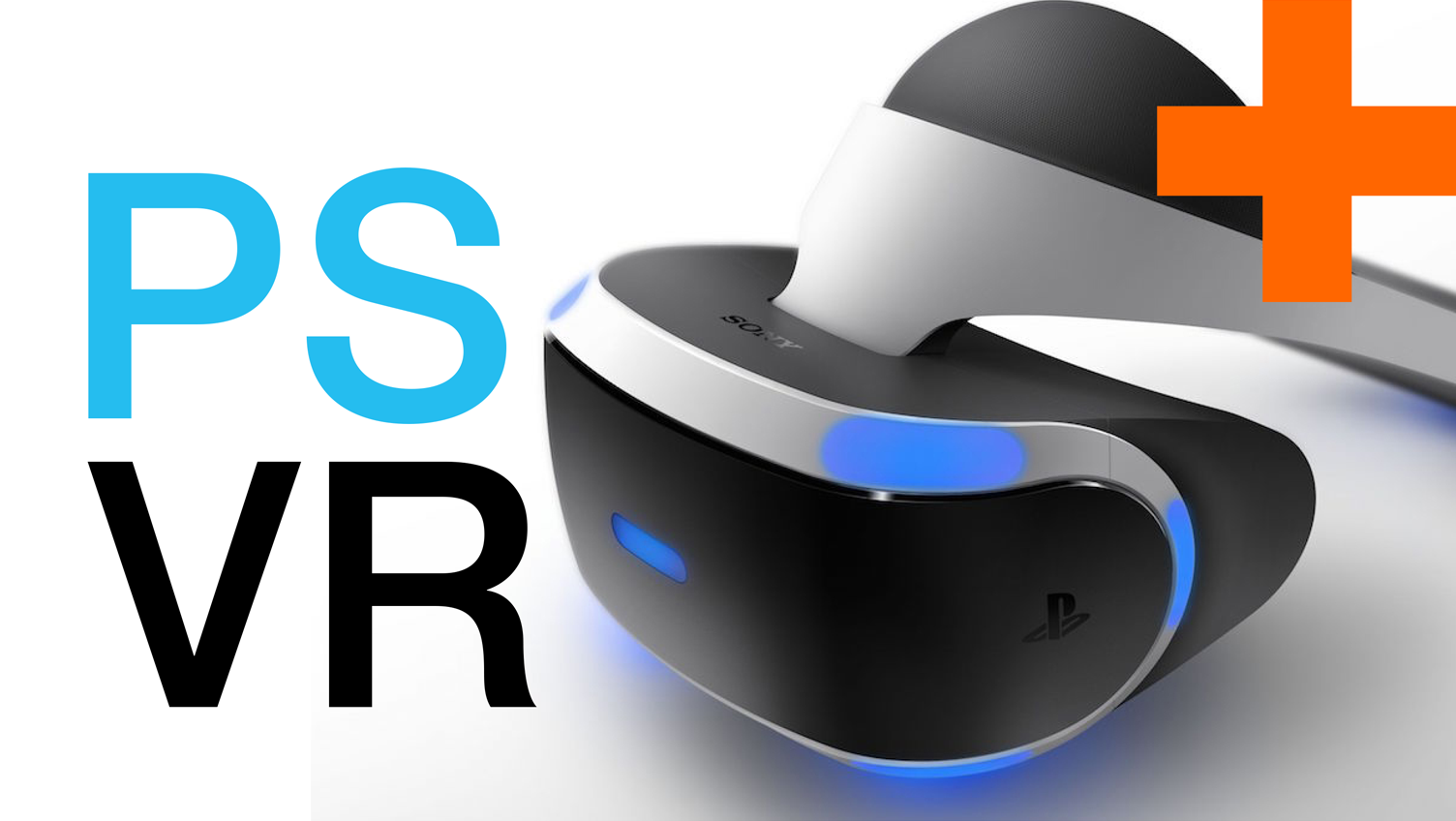
Welcome to virtual reality
- Release date: October 13
- Price: £349.99/$399
- Format: PS4
It's finally time. The PlayStation VR release date of October 13 is fast approaching and we've been hands on with the headset for over a week. We've tested as many games as our eyesight would allow and discovered how virtual reality gaming actually works on a day-to-day basis in your home. We've seen everything VR has to offer in its current form, from shark attacks, to suiting up as Batman, to the very real hazards of tripping over wires in your living room; and the perils of 'VR blindness' caused by immersing yourself in a headset as the virtual world interferes with the actual.
We also address the physiological effects facing many potential VR players and the experiences that made us feel nauseous. Finally, we offer our thoughts on whether you should invest in virtual reality right now… or wait. Read on for our definitive PlayStation VR review.
The PlayStation VR review
PlayStation VR has the distinction of being the most affordable VR headset on the market when it launches on October 13th, with a $400 / £350 price tag that's a lot less intimidating than the $600 / £550 Oculus Rift or the $800 / £760 HTC Vive. It also benefits from the massive PlayStation 4 install base, given that not everyone has a beefy gaming PC at the ready to facilitate the latter headsets.
As a platform, I think VR still needs a generation or two to achieve the tipping point into mass appeal; PS4 owners shouldn't feel like they're missing a revolution if they're not clambering to run out and buy PS VR this instant. But after using all three VR headsets extensively, I firmly believe that PlayStation VR is the leading VR headset in the ways that matter most: comfort level and game library. If you've been eager to become an early adopter of VR but wanted to wait and see how things would shake out between Oculus, Valve, and Sony, PlayStation VR is the one to buy.
What's it like wearing the PlayStation VR headset?
Comfort is a crucial part of enjoying VR, and the PS VR headset has been masterfully designed to feel as comfortable as possible. That's largely due to its brilliant weight distribution: whereas the Rift and Vive are essentially a screen strapped to the front of your face, PS VR uses a headband design that gently rests atop your head like a halo. You'll barely even feel the large cushion that sits above your forehead, and the band that wraps behind your cranium is snug without creating a clamping sensation. The textured rubber that lines the headset's inner padding creates a pleasant amount of grip, and the headset as a whole feels like one complete unit rather than an eyepiece with a set of velcro straps attached. After using the Rift and the Vive, which make me feel like the front of my head is being weighed down somewhat by a hefty piece of plastic, I love the way PS VR orbits my head without ever encumbering it.
Putting the headset on isn't so intuitive that anyone can pop it on without some guidance, but after you've done so once or twice, it should feel like second nature. Pushing a button on the back band lets you stretch the headset to fit your head, with two bands of firm rubber pulling it into place. It'd definitely be an issue if these bands were to break, but they showed no signs of fraying after putting on and taking off the headset dozens of times. Once the band is secured, a dial behind the back button lets you tighten the fit in tiny increments. If you're too overzealous on clicking the dial, it'll start to feel like there's a vice on your noggin, but you can simply alleviate the pressure and re-adjust by pushing the button to release the dial. Easy-peasy.
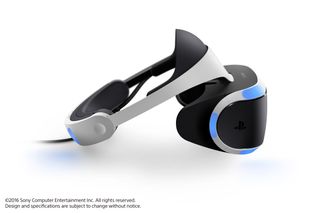
The PlayStation VR display
After you've put the headset on, you can easily adjust the closeness of the eyepiece - and thereby tune the focus of your VR vision - by pressing another button on the bottom right of the visor. On top of the ideal weight distribution, this is the other component of PS VR that feels like an ease-of-use godsend after using the competition. The primary way to adjust the focus of the Vive and Rift headsets are the velcro straps that line the top and sides of your head, which in my experience has always led to a frustrating guessing game. I need to pull the straps tight enough to see the games in focus, without making them so tight that they make me feel like my head will explode if I'm wearing the headset for longer than a half-hour. Because it's such a finicky, imprecise process, I typically settle for 'good enough' when it comes to my view of VR worlds.
Sign up to the GamesRadar+ Newsletter
Weekly digests, tales from the communities you love, and more
But with PS VR's sliding eyepiece, I feel empowered and encouraged to adjust my sight until it's reached that 'perfect' degree. The eyepiece satisfyingly clicks into place whenever you've found the optimal spot, and because it sits in front of your eyes rather than being pulled onto your cheekbones, it doesn't create any uncomfortable pressure or that unsightly 'VR face' of dark red lines around your eyes (the one tradeoff being that the PS VR headset might mess up your hair). The flexible rubber which encompasses the eyepiece also addresses my biggest pet peeve with the Rift headset: outside light leaking into your line of sight. You'll still have very faint awareness of the room's lighting in your peripheral vision, but the two rubber flaps that cradle your nose completely eliminate that annoying slit of inescapable reality that hinders the immersion of the other headsets.
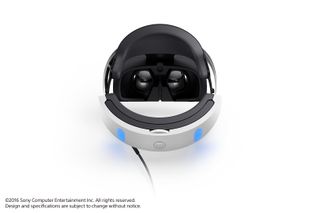
In terms of resolution, the 1920 x 1080 display suits me just fine. Yes, it's a smaller number than the 2160 x 1200 resolutions of PS VR's competitors. But I didn't notice a significant dip in overall visual fidelity, and the headset displays all seem to suffer from the same problems: reading text at any distance will strain your eyes, bright white objects seem to shimmer with underlying color, and you'll be able to detect things like jagged edges on shadows or mildly blurred objects in your periphery if you go looking for them. Examining your VR surroundings still feels like peering through a Viewmaster or scuba mask at first, but most games do a great job of immersing you, to the point that you stop noticing the boundaries of your little window into these virtual worlds. And, as with all headsets, should the lenses get foggy (an infrequent occasion in PS VR), everything looks like a fuzzy mess.
I don't wear glasses, but my coworkers who do say that PS VR accommodates their eyewear perfectly. And with all the smartly designed components of the headset, it's also the easiest option to pass around and quickly fit during group play. It's aesthetically pleasing, a simple black and white design (with icy blue light from the sensors) that still retains some of the inherent goofiness of any chunky VR headset. All-in-all, this is by far my favorite headset design of the three, and after getting accustomed to PS VR's comforts, I dread the thought of going back to the relative heaviness and constriction of the Rift or Vive.
What's in the box? Setting up the PlayStation VR
Wires for days. Ok, it's not that bad, but it should be telling that the PS VR comes with five numbered cables that need to be plugged in for the headset to function (not including an additional HDMI cable and the PlayStation Camera cord). The additional mass of wires is created by the Processor Unit, a small box about the length and width of a DualShock 4 controller that acts a junction between your headset, PS4, and TV.
Thanks to the Processor Unit, onlookers can see what you see on the TV, albeit in far less impressive 2D. It's somewhat annoying that the Processor Unit occupies one of the two USB ports on the front of the PS4, so unless you have a separate charging station, you won't be able to charge multiple devices (like, say, two PlayStation Move controllers) at a time. Another minor inconvenience is that logging out of your profile automatically turns the headset off, forcing you to come out of it if you want to swap profiles to switch games.
The requirement of the PlayStation Camera (both the old and new versions work) is also limiting. On the plus side, setting it up is a cinch, and though the PS VR FAQ recommends "approximately 9.8 feet by 6.2 feet" of free space in front of the camera, you don't need nearly that much to enjoy most games, the majority of which are played from a seated position. Rarely did I ever move my head out of the play space, whether I was at my spacious office or in my cluttered room. And because you're typically sitting down, you usually won't feel the light pull of the cord on the ground (which can also gently rest in your lap); this gets rid of that slight dragging sensation that I associate with the other headsets.
All that being said, the head- and controller-tracking can't hold a candle to the Vive, which makes sense given that the Vive uses two cameras and demands a massive amount of space for room-scale experiences, which aren't currently possible in PS VR. Sometimes, all it takes to break your sense of immersion is one jitter of your viewpoint as the camera loses track of you for a split-second, or disappearing hands when you turn in such a way that your body blocks a Move controller from the camera's line of sight. Bright natural light has a tendency to mess with the camera's tracking, which is why the setup tutorial recommends that you close the blinds before playing (further reinforcing the stereotype that VR will make sun-fearing shut-ins of us all).
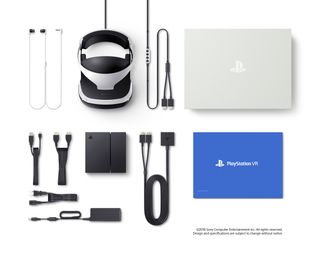
The camera also reads the DualShock 4's light bar, which some games use to neat effect by giving you a virtual analogue of the controller you can look at in the world. But I encountered a strange glitch on multiple occasions where the virtual controller was rotated 90 degrees from the real thing, even when the light bar was pointing directly at the camera. You may also need to adjust the angle of the camera so that it can see the controller if it's in your lap during play, unless you want to constantly prop up the controller with your elbows on your chair's armrests. It's not the worst thing in the world, but it certainly feels (and probably looks) fairly awkward.
PS VR benefits from built-in 3D audio, with volume controls (and a button to mute the headset's built-in mic) located right next to the power button on the inline remote. The downside is that surround sound setups aren't recommended, and you can't go wireless; if you want to use some PlayStation Gold headphones, for example, you'll need to plug them in directly with a 3.5mm cable. Of course, the PS VR headset makes a fully wireless setup impossible to begin with, so it's something of a moot point. You can also opt to use the included earbuds, which pump out satisfactory sound; the shortness of the left earbud's cord would be an issue if the 3.5mm plug wasn't already so close to the headset. The inline remote is always within reach, and thanks to a small nub on the volume controls, you'll never need any assistance to sightlessly fiddle with the volume.
Interestingly, you can treat the PS VR headset the same way you might use the Wii U GamePad: a separate screen that frees up the TV for something else. I tested turning the TV off and switching the input during play, and neither had any effect on my headset-enclosed experience, thanks to the TV output being handled by the Processor Unit. If a family member or roommate wants to watch cable while you enjoy PS VR, they theoretically can - just be wary of them messing with you while you're totally oblivious in your VR cocoon.
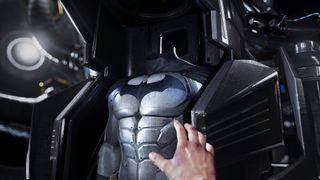
PlayStation VR's games
Click to read our full roundup of the best PlayStation VR games but here's our thoughts on the range of different titles available.
There's no one game that exemplifies all of PS VR's strengths, so it doesn't have a singular 'killer app' in the traditional sense. Rather, the current PS VR library offers a diverse array of experiences you can't get anywhere else; some genres excel in the new medium, and others still have some kinks that need to be worked out before you'd choose them over the typical played-on-a-TV title.
The demo disc that comes with every PS VR headset (featuring many of the same demos you can download on PSN) does an admirable job of showcasing the sheer variety of PS VR's library, though the act of browsing the collection isn't ideal. As you switch between each demo and the main menu, you'll spend upwards of 30 seconds in a black void, staring at spinning white dots as you wait for everything to load in. It's also funny to see terrifying M-rated games daintily placed near family-friendly titles - though bear in mind, every game explicitly states that PS VR is "not for use by children under age 12." Who knows how virtual reality could warp a young mind?
Batman: Arkham VR and the five-game medley of PlayStation VR Worlds should be your go-to games when showing off PS VR's capabilities to the uninitiated. Perching high above Gotham and looking through Batman's eyes is a dream come true for many, and VR Worlds delivers some electrifyingly tense first-person moments in The London Heist and Ocean Descent. But both games can give off the same sensation as a theme park thrill ride: your first time through is always a rush, but they're over all too quickly, with carefully designed twists and turns that never change. Extra challenges do add a modicum of replay value, but you might be left saying "That's it?" when the credits roll.
Can PlayStation VR make you feel sick?
Your sensitivity to motion sickness should also be a consideration, even if you typically aren't prone to it. The most reliable catalysts for motion sickness, at least from my experience, are games that try to employ the traditional FPS control scheme, where you're moving with the left stick and aiming with the right. I never get motion sick from games played on a flat screen, but the discombobulation brought on by a mere ten minutes of shooting in games like RIGS: Mechanized Combat League, Battlezone, and VR Worlds' Scavengers Odyssey is enough to make me bail for fear of losing my lunch (which, for the record, has yet to actually happen). Developers I've talked to previously have theorized that you can build up your tolerance to VR nausea over time, but you may not want to make that long-term commitment if a single match sends you straight to Queasy Street.

It really does depend on the game, though; I felt absolutely fine after playing four straight hours of other games that were just as visually stimulating. The determining factor is how movement functions; if you're teleporting between isolated spots (as in Batman: Arkham VR) that's just fine, but it's also ok to be in constant forward motion that operates outside of your control, as seen in games like SuperHyperCube, Thumper, and Until Dawn: Rush of Blood. When done right, this kind of movement can induce a thrilling sensation of momentum without making your stomach churn.
Speaking of, PS VR absolutely excels when it comes to the surreal, psychedelic graphics in games like SuperHyperCube, Thumper, and Rez Infinite. Their presentation in VR is sublime, embedding you deep within worlds full of neon lights and blippy beats and awing you with a phantasmagoric sense of place. Rather than chase after the immersion of photographic realism that VR can't seem to achieve just yet, these games succeed by going in the complete opposite direction and realizing the unreal in astonishing fashion.
Of all the PS VR games I've played, I most enjoyed my time spent flipping an ever-growing block in SuperHyperCube's mix of Tetris and a Rubik's Cube, guiding a prismatic beetle past obstacles to the rhythm of pounding drums in Thumper, and taking in the vastness of a musical cyberspace while blasting viruses in Rez Infinite. The latter two games are playable without VR, but now that I've seen how transcendent they can be from inside a headset, I'd feel like I'd be depriving myself of their full potential by experiencing them any other way.
PlayStation VR excels for immersive horror experiences

PS VR also amplifies the potency of horror games, turning what might otherwise be some by-the-numbers jump scares into stupefyingly startling terrors. Courtesy of the 3D audio, games like Until Dawn: Rush of Blood, Here They Lie, and the Resident Evil 7 teaser Kitchen use sound for some masterful misdirection, luring your gaze to set up some truly horrifying moments. Those ghouls, ghosts, and goblins are now lurching towards you in a space that feels rather real, and a panic may set in when you realize that your hallucinatory surroundings seem to change whenever you so much as glance in a different direction. These kinds of clever scare tactics have been done before, but in PS VR, they can induce the kind of adrenaline spike you simply wouldn't get from horror games that don't completely envelop your face.
You also have the option to play non-VR games in the headset, though I don't think you'd want to (besides using the aforementioned method to turn PS VR into a personal second screen). When perusing the PS4 home screen or playing a regular game, you'll see everything on a large virtual screen hovering in a black void. It initially feels like having your own home theater, but prolonged use makes it obvious that the display looks nowhere near as crisp as an ordinary TV.
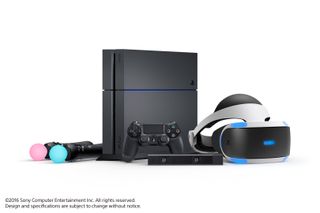
Should you buy PlayStation VR?
As with any new technology, becoming an early adopter of PlayStation VR is a bit like gambling. First and foremost, you need to be willing to part with a sizeable sum of money: $400 / £350 for the headset alone isn't small change to the average consumer, and that's assuming you've already got the necessary hardware of the PS4 itself and a PlayStation Camera. You're also betting that you'll be rewarded by buying into this platform in the first place, banking on the idea that you'll still be enjoying your investment when the novelty wears off, and that developers will continue to support PS VR with worthwhile games that use the headset to the fullest.
But you're not just a gambler - you're also an ambassador. If you plan to purchase PlayStation VR, it's practically your civic duty to share the experience with your friends: invite them over, inaugurate them into virtual reality with your favorite games, maybe even inspire them to buy a headset of their own. It's akin to having a personal arcade cabinet, or prohibitively expensive consoles like the Neo Geo or Sega Saturn back in the day. The joy of owning and experiencing these luxury forms of entertainment is only heightened when you share them with others.

Personally, I'm not going to take the plunge on PS VR just yet. Most games make an exemplary first impression, but they all strike me as limited in some way: narrative-driven games seem to wrap things up just when the going gets good, and the abstract action games I adore really just boil down to high-score chasing on the leaderboards after the first few runs. If you take away the magic of VR and look at these games from a purely utilitarian perspective, I don't feel like I'm getting enough gameplay depth for the substantial buy-in (especially when you factor in the inconsistent pricing across games, some of which - like $25 for the horrendously scant, shallow content of Harmonix Music VR - feel borderline insulting).
A few of my colleagues seem to share those sentiments, having cancelled their pre-orders while they wait for more incentives or cheaper bundles. But many on the GR+ staff will be embracing PS VR from the onset, including our news lead Louise Blain (who reviewed many of the PS VR launch titles), and UK executive editor Andy Hartup. As Louise sees it, there are enough truly special VR experiences already and she's ready to invest in what might not definitively be the sole future of gaming, but is an exciting step forward allowing her to live fully inside the worlds we spend so much time exploring already. Whatever you say about virtual reality, it's an experience like none you've had before, and in a year characterised by HD remakes and sequels, that's no mean thing.
In the end, your purchasing decision should come down to whether you think you fit the bill of being an early adopter. Not everyone can justify spending hundreds on a peripheral, especially one that's still in the experimental phases of delivering state-of-the-art entertainment. But if you've got the money to spare, and want to share in the excitement of VR's infinite possibilities, then PlayStation VR feels like the most sensible choice.
Lucas Sullivan is the former US Managing Editor of GamesRadar+. Lucas spent seven years working for GR, starting as an Associate Editor in 2012 before climbing the ranks. He left us in 2019 to pursue a career path on the other side of the fence, joining 2K Games as a Global Content Manager. Lucas doesn't get to write about games like Borderlands and Mafia anymore, but he does get to help make and market them.
Most Popular



